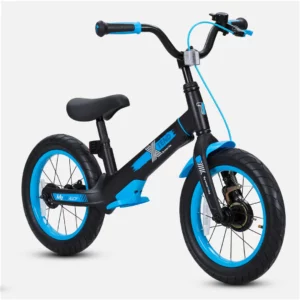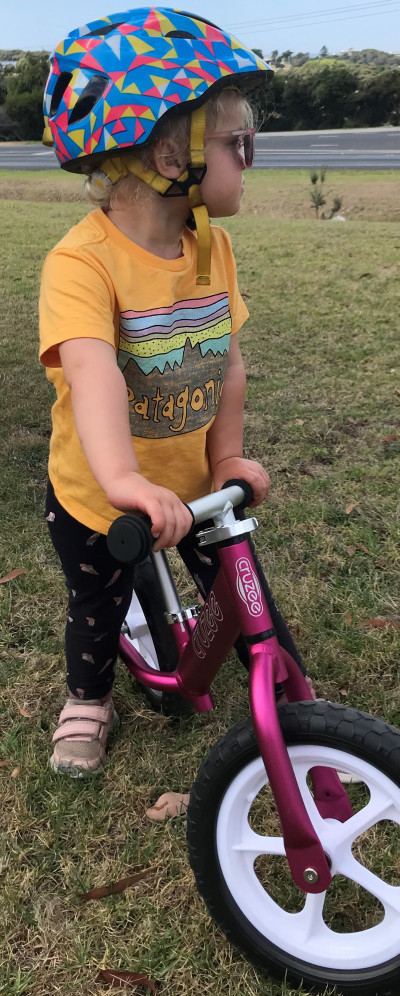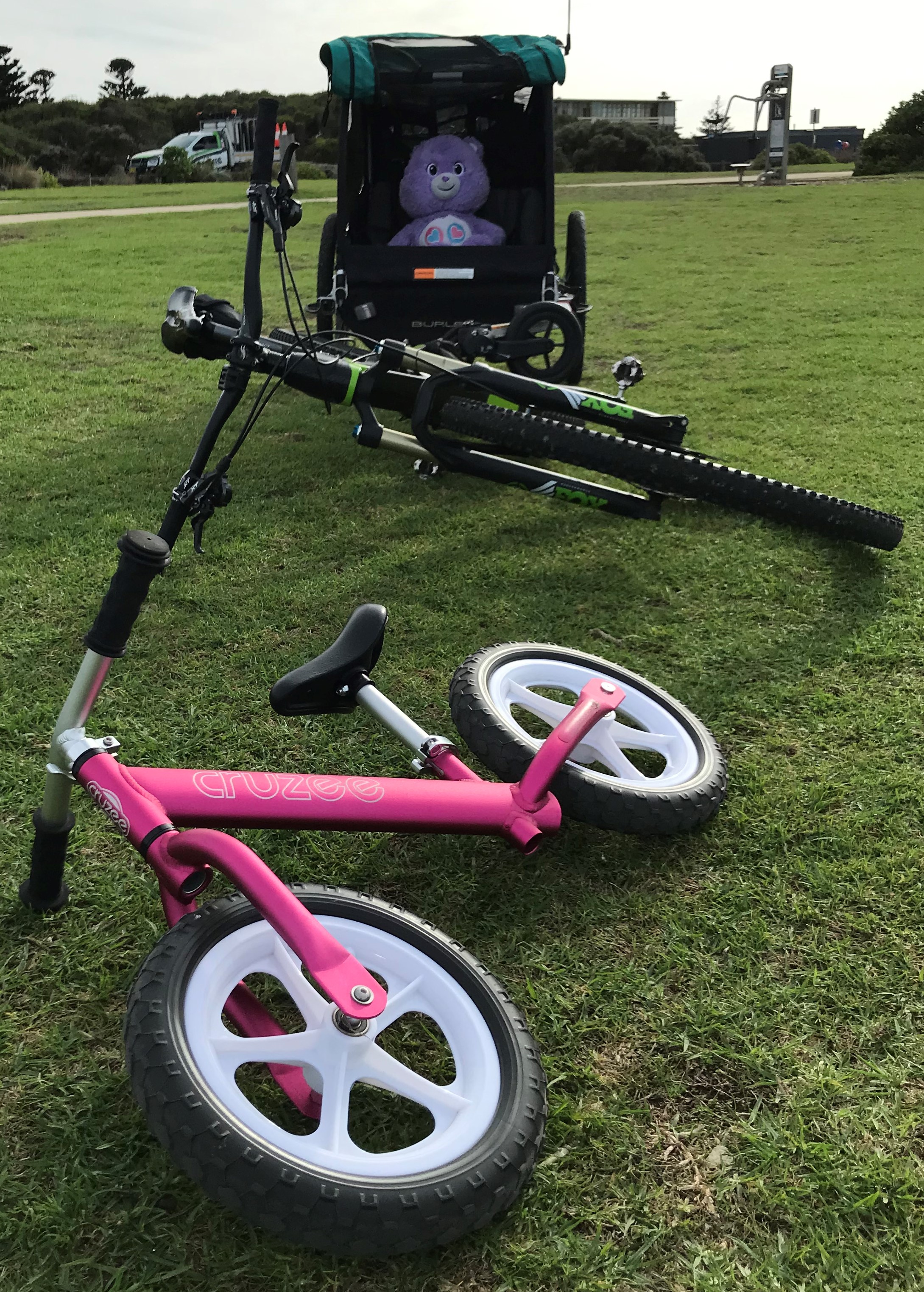
Welcome back to the second and final post in our series, 10 essential tips for parents teaching their child how to ride a balance bike.
If you are new, it’s great to have you here and we highly recommend you head over to Part 1 in our series so that you can better understand our ideas and tips when teaching your child how to ride a balance bike.
In Part 1, we covered tips one-to-five which included the following;
1. Choosing the right size bike
2. Have the essential safety gear and clothing
3. Provide the right environment
4. Follow our 4-step approach to learning
5. Encourage walking, running and gliding
In this, our capstone article Part 2, we will be riding through the following tips with you;
Part 2
6. Teach the skills of slowing down and stopping
7. Provide opportunities to practice
8. Model patience and positive reinforcement
9. Encourage, encourage, encourage
10. Make it fun!
Yes, we are going to extend our teaching of bike riding skills for you, from slowing down and stopping to keeping things fun and enjoyable (plus some cool stuff in between).
Whether you’re a seasoned cyclist or a complete novice yourself, we believe these essential tips will equip you to guide your little rider towards mastering one of life’s great pleasures: the simple joy of riding a bike.
Enjoy!
*** Affiliate disclosure time: Some links on this page are affiliate links. If you click on those links and make a purchase within a time frame, we earn a small commission.
6. Teach the skills of slowing down and stopping
Now that your child is moving along confidently either walking, jogging or running it’s the perfect time to teach your child how to slow down and stop safely.
As the majority of balance bikes don’t have a hand brake, slowing down and stopping is controlled by the rider’s feet. Picture The Flintstones if you’re having trouble visualizing what this looks like 🙂
By now, your child will already be using their feet to slow down and stop, but it’s a great idea to give them some important tips to help them better control their speeds. Here are just a few;
- Encourage your child to use their feet to drag along the ground to slow them down (this is one reason why wearing runners is essential). For this very reason, we have dedicated bike shoes for our little girl who quite instinctively, has developed using a preferred foot to drag along the ground to control her speeds.
- Encourage your child to use different surfaces to slow down such as grass or gravel. These surfaces usually border bike and pedestrian paths, so teach them to ride onto those surfaces as this easily allows them to slow down and stop naturally, and
- Use the same principal to slow down on an incline
 If your child does have a balance bike with a handbrake (such as the smarTrike pictured), follow the same 4-step approach to teaching this skill and cover the following points.
If your child does have a balance bike with a handbrake (such as the smarTrike pictured), follow the same 4-step approach to teaching this skill and cover the following points.
- Show them how to gently squeeze the brake lever with two fingers (their index and middle fingers), and to ride along resting these fingers on the brake lever
- Explain that braking gently is how we slow down and stop, rather than trying to stop quickly as this may cause a fall
- Ask them to ride resting their fingers on the hand brake at all times initially
- Provide some fun games or opportunities for them to practice using their brakes on different surfaces
*** Special side note
If within your budget, we highly recommend purchasing a balance bike with a handbrake. This will help fast-track this essential bike riding skill while learning how to balance.
FirstBike is an award winning, highly reputable balance bike that has some amazing safety features and the addition of a handbrake. To check out our review of FirstBike you can click here.
In addition, other balance bikes with a hand brake that we recommend due to their quality design and excellent reputation in the world of balance bikes include smarTrike 3-in1 Xtend (see image above), Norco Runner 12 and the Go Glider 16″ (for 5 – 10 year olds).
Just remember, match the bike to you child, and not the child to the bike! Take your time with your research and be sure to make certain the bike is well suited to your little rider.
7. Provide opportunities to practice

Regular practice is the key to mastering the balance bike.
Set aside regular times for your child to practice riding their bike. Start with short, fun rides and gradually increase the duration and distance as your child gets more comfortable.
You can incorporate bike riding into their everyday activities such as time at a park, riding part of the way to your local playground, their friends house or childcare center, or simply exploring parts of your local community.
Like anything, bike riding is a skill that will improve given time and opportunity to practice.
8. Model patience and positive reinforcement
Like practice, positive reinforcement is essential when teaching your child how to ride a balance bike.
As you get out and practice with your child, there will be ample opportunities for you to praise their efforts or particular skills being shown.
For example, they may ride off the bike path and onto the grass to keep well away from oncoming faster riders or pedestrians.
Take the time to let your little rider know why their actions were great, and that you’re proud of how well their doing.
Of course, at times they will make mistakes.
Timely, gentle correction sprinkled with explanation, patience and love will encourage them to continue trying, regardless of how much they may struggle at first.
In addition, celebrate their successes no matter how small, as this models positive reinforcement for your child.
9. Encourage, encourage, encourage
The sub-heading above says it all. First a statement that reinforces the importance of this point.
“There is no greater encouragement than to show an interest in your child’s learning!”
Learning to ride a balance bike, like any skill, takes time, persistence, and a lot of determination.
Think back to when you were learning a new skill and initially how challenging this may have seemed. If you are fortunate to have had a parent or teacher right there alongside you, you can probably recall their words of affirmation and encouragement even to this day.
Your words of encouragement are powerful and will be remembered possibly for a lifetime. Not purely because of the learning and fun memories you are creating, but due to the timing.
At the right time, words of encouragement can lift your child’s progress to a whole new level.
The take home message is simple.
There is no greater encouragement than to take an interest in your child’s learning. Verbal encouragement is the pièce de résistance to your efforts.
10. Make it fun

Finally, remember to have fun! Riding a balance bike should be a fun and enjoyable experience for both you and your child.
You know your child best. Once their riding becomes anything less than fun, change it up. It’s time to have a break and share some snacks or a picnic, hit the playground or sit and chillax with your little rider.
There is no pressure for them to learn quickly or perfectly, no due dates or final exams to worry about. Instead, focus on having fun and simply enjoying the wonderful experience of learning to ride a bike together.
It’s crucial at this stage of their learning and development that every riding experience is fun and enjoyable, so they will be jumping out the door wanting to ride their bikes and not at all hesitant due to learning being too difficult or rigorous.
If your would like some additional ideas on how to have fun while teaching your child how to ride a balance bike, head on over to our post, Balance bike riding ideas for toddlers and preschoolers. We are certain you will find this most helpful.
Overall ilovetoridemybike.com conclusion
That concludes our two-part series on 10 essential tips for parents teaching their child how to ride a balance bike.
In sum, teaching your child how to ride a balance bike is a rewarding and wonderful experience that requires patience, practice, and positivity, from both the rider and teacher.
We believe that by following these 10 essential tips, you can help your child develop the essential bike riding skills of balance and coordination while having a bucket load of fun and creating lasting memories that will hopefully sow the seeds for a passion and love of riding that will last a lifetime.
If you would like to learn more about how to teach your child how to ride a bike, head over to our two-part series, How to teach your child how to ride a bike – Part 1 and Part 2. We are certain you will find these most helpful.
How is your child’s riding going? We love hearing from you, so please send through any questions or comments below, we are here to help.
Until next time, happy riding!


